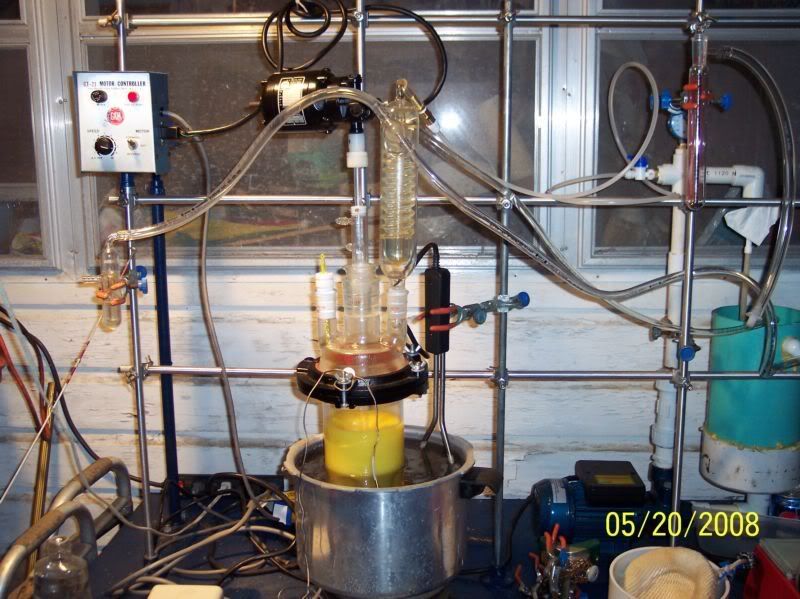

 Such oxidations are published in many different organic expermental laboratory course textbooks, you'll probably need
to visit a decent university library after studying the patent
Such oxidations are published in many different organic expermental laboratory course textbooks, you'll probably need
to visit a decent university library after studying the patent 
 More details as to how this happens can be found in the WD archives, search and you shall find out how it's done
More details as to how this happens can be found in the WD archives, search and you shall find out how it's done 


| Quote: |
| Quote: |
| Quote: |
| Quote: |
| Quote: |
| Quote: |


 of the two oxidation reactions. The E<sub>a</sub> is an important factor
in the reaction rate constant equation (the famous Arrhenius equation). Most other parameters in the rate constant and reaction rate equations are
either identical (T), average to nearly the same value (concentrations of the two substrates over time), or are assumed to be of a similar order (like
the correlation coefficient between BDE and E<sub>a</sub> and the A factor in the Arrhenius equation).
of the two oxidation reactions. The E<sub>a</sub> is an important factor
in the reaction rate constant equation (the famous Arrhenius equation). Most other parameters in the rate constant and reaction rate equations are
either identical (T), average to nearly the same value (concentrations of the two substrates over time), or are assumed to be of a similar order (like
the correlation coefficient between BDE and E<sub>a</sub> and the A factor in the Arrhenius equation). =
x*(BDE<sub>2</sub>-BDE<sub>1</sub>
=
x*(BDE<sub>2</sub>-BDE<sub>1</sub> /(RT)
/(RT) = x*(33495 J/mol)/( 2769
J/mol) = x*12.1 (taking T = 333 K or 60°C)
= x*(33495 J/mol)/( 2769
J/mol) = x*12.1 (taking T = 333 K or 60°C)| Quote: |
| Quote: |

| Quote: |
 ***I have found it, at last. It was classical case of blindness
***I have found it, at last. It was classical case of blindness 

| Quote: |
| Quote: |
 ).
).| Quote: |


| Quote: |
| Quote: |
| Quote: |

| Quote: |
| Quote: |


 Always test.
Always test.
| Quote: |
 ). Benzyl alc. is sensitive to heating with acids ( info from available online
wiley's encyclopiedia): heating same alcohol with acid can be dangerous, because of its spontaneous polycondensation. I think that in case of heating
with conc. HCl such a condensation take place, at least partially. And, as I have already written, refluxing conc. HCl does not belong to pleasure
things.....
). Benzyl alc. is sensitive to heating with acids ( info from available online
wiley's encyclopiedia): heating same alcohol with acid can be dangerous, because of its spontaneous polycondensation. I think that in case of heating
with conc. HCl such a condensation take place, at least partially. And, as I have already written, refluxing conc. HCl does not belong to pleasure
things.....Quote: Originally posted by Nicodem  |

Quote: Originally posted by MeshPL  |
| Quote: |
Quote: Originally posted by Chemi Pharma  |
Quote: Originally posted by JJay  |
Quote: Originally posted by Melgar  |
Quote: Originally posted by Melgar  |
Quote: Originally posted by JJay  |